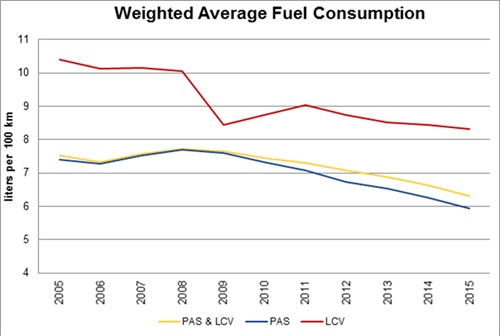
Top stories






Marketing & MediaFormer FNB CEO Michael Jordaan backs Adbot to build tools that multiply marketing capacity
AdBot 8 hours
More news



















In 2006, the weighted average fuel consumption of passenger (PAS) vehicles was at 7.19 litres per 100km, and in August 2015 that number dipped to 5.86 litres per 100km. Light commercial vehicles (LCV) average fuel consumption in 2006 was 10.3 litres per 100km, and in 2015 this decreased to 8.42 litres per 100km.
Possible factors contributing to this could include: strict emissions standards abroad; the availability of cleaner fuel such as 20ppm diesel; and the manner in which fuel gets into an engine and how it is used, has improved greatly, thus allowing for greater efficiency in an engine. This is all great news for motorists as it means they are getting more mileage at a lower cost when compared to nine years ago.
Lightstone's data also looked at the average kilowatt per engine size (in litres) and it is evident that there was an increase of roughly 3kW's between 2003 and 2007. Bigger engines no longer mean better. The bigger the size of the engine, the more fuel is burnt and more by-products emitted, ultimately resulting in higher emission tax to be paid by manufacturers to produce a vehicle.
Manufacturers realised the higher emissions tax they had to pay, the less profits they would ultimately make, so they started to make smarter decisions when it came to engine development and adding more power to their existing, smaller engines. Post 2007, the average kW's per engine increased quite substantially.
In 2015, PAS vehicles have an average of 69.5kW, whereas in 2005 they were sitting on 53.8kWs. That's a 14.5% increase over eight years. LCVs were at 36.2kW in 2007, and increased to 41.3kW in 2015 - a 5.1kW difference.
"Engine manufacturers have moved away from increasing combustion chamber size, and have begun to increase power. These days it is all about getting maximum combustion percentage from each fuel-air mix particle, meaning that the size of the combustion chamber is not so important for road-faring motor vehicles any longer. This is not something new. Motorcycle engine manufacturers have achieved this for some years now, their 998cm engines can generate 150Kw," says Heinrich Coetzee from Lightstone Auto.
There are many factors that affect how much fuel a car needs, including tires, road surfaces, temperature, driving style, driving conditions, elevation and atmospheric pressure, grade of fuel, and break-in of the engine, to name a few.
With this technology trend, and engine efficiency having improved, we are well on our way to more economical, and powerful vehicles, without compromising on engine quality and cost. And while the weak rand may have a substantial effect on the price of fuel, it's good to know that motorists are at least still getting more mileage out of their vehicles (and fuel) in the long run.